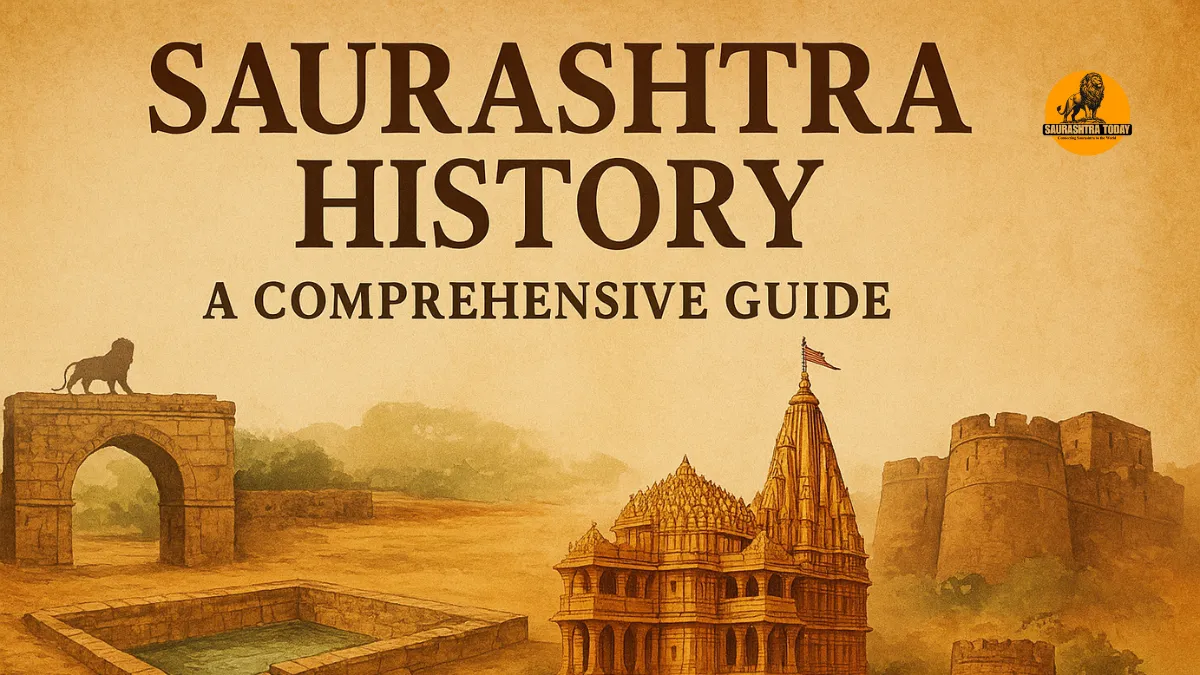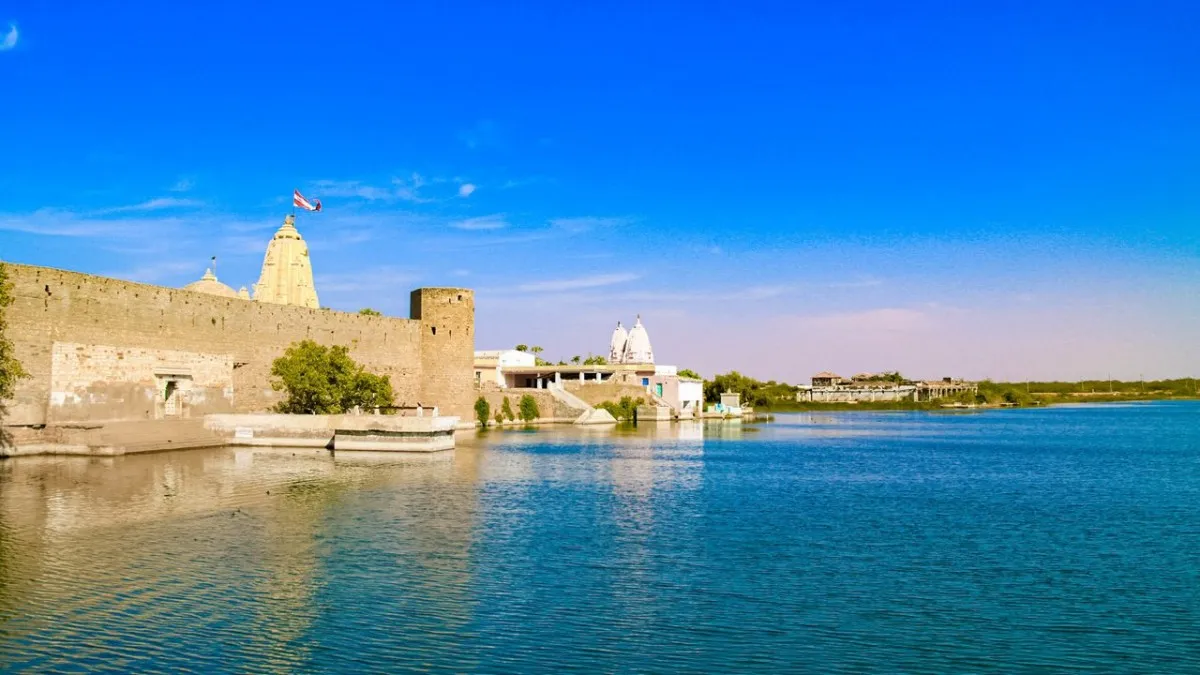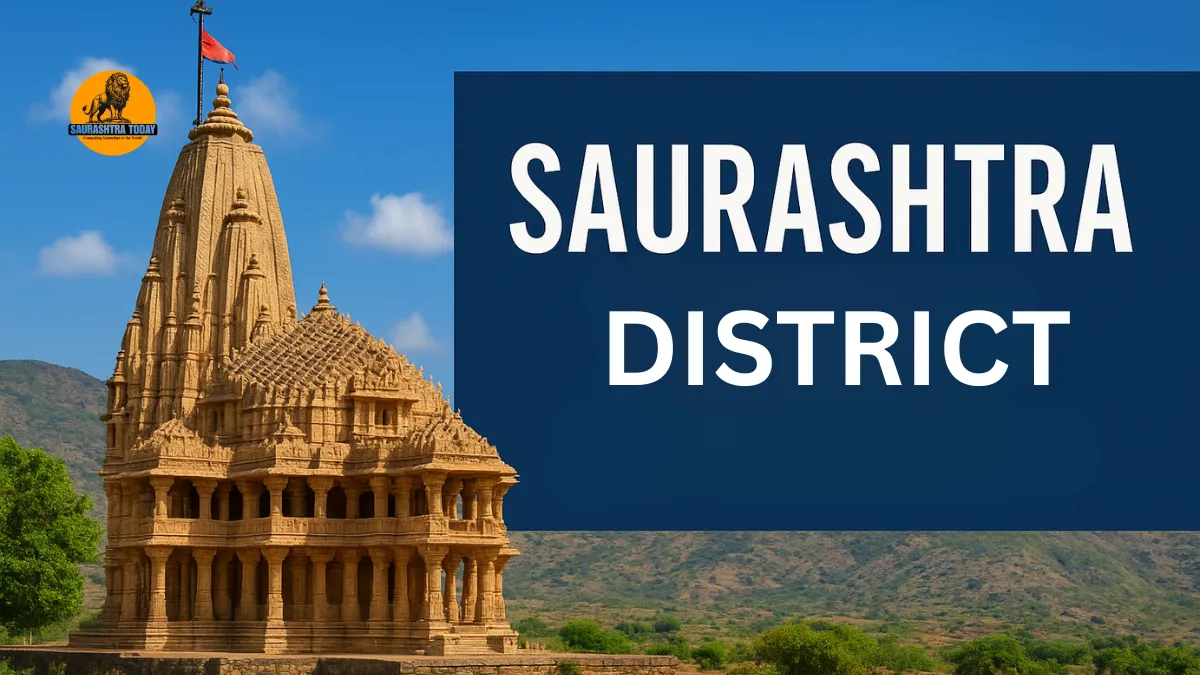Saurashtra history is a rich tapestry that traces the evolution of one of India’s most culturally and historically significant regions. Located in the western part of India within the state of Gujarat, Saurashtra—historically known as Kathiawar—has been a hub of civilization, trade, and cultural development for thousands of years. From prehistoric settlements to contemporary developments, Saurashtra’s journey through time reflects its strategic importance, diverse rulers, and unique cultural identity. This article provides a complete, detailed exploration of Saurashtra’s history, offering insights into its dynasties, cultural heritage, economy, and key historical sites.
Ancient Origins of Saurashtra
The story of Saurashtra begins in prehistoric times. Archaeological discoveries indicate that the region was home to human settlements during the Indus Valley Civilization (c. 3300–1300 BCE). Excavations at sites such as Lothal, Rangpur, and Gola Dhoro have unearthed ancient docks, seals, pottery, and tools, suggesting that Saurashtra was an important center for maritime trade. Lothal, in particular, was one of the world’s earliest known dockyards, highlighting the region’s strategic position for commerce with Mesopotamia and other ancient civilizations.
Saurashtra’s coastal geography allowed it to become a key hub for early trade and cultural exchange. Archaeological findings suggest that the inhabitants engaged in agriculture, pottery making, beadwork, and trade of commodities such as cotton, spices, and semi-precious stones. These early activities laid the foundation for Saurashtra’s economic and cultural prosperity in the centuries to come.
Saurashtra in the Early Historic Period
During the early historic period (c. 200 BCE–500 CE), Saurashtra was influenced by various local dynasties and regional powers. The Maitraka dynasty of Vallabhi (c. 475–776 CE) emerged as the most prominent ruler of the region. Vallabhi became a significant political, cultural, and educational center. The Maitrakas were known for their patronage of learning, art, and architecture, and the Vallabhi University became an important seat of higher education, rivaling even the famous Nalanda University in Bihar.
Religion and philosophy flourished during this period, with both Buddhism and Jainism gaining prominence. Many temples and monuments constructed during the Maitraka rule stand as a testimony to their architectural and cultural contributions. The region’s economy thrived through agriculture, trade, and craftsmanship, establishing Saurashtra as a center of prosperity.
Medieval Era and Dynastic Rule
The medieval period in Saurashtra history saw the rise of several Rajput dynasties and local rulers. Notable among them were the Chudasama dynasty, ruling from Junagadh, and the Solanki dynasty, which left a lasting cultural and architectural imprint on the region. Junagadh, with its majestic forts and temples, became a political and cultural center.
During the 13th century, the Gujarat Sultanate brought Islamic influence to Saurashtra, introducing new architectural styles, administrative systems, and cultural practices. The blending of Hindu and Islamic traditions led to unique regional art, architecture, and cultural expressions. Despite these shifts, Saurashtra retained its distinct identity, balancing local traditions with external influences.
The Princely States and Colonial Era
During British rule in India, Saurashtra consisted of more than 200 princely states, collectively known as the Kathiawar Agency. These states enjoyed internal autonomy but were subject to British supervision. Some prominent princely states included Bhavnagar, Junagadh, Porbandar, and Jamnagar.
The British period brought modernization and changes in administration, transportation, and trade. Saurashtra’s economy, particularly agriculture and textiles, flourished. Ports like Veraval and Porbandar became significant centers of maritime trade, exporting cotton, salt, and spices to global markets. This period also saw the preservation and renovation of historical monuments, palaces, and temples under princely patronage.
Post-Independence Saurashtra
After India gained independence in 1947, the princely states of Saurashtra were integrated into the Indian Union. In 1948, they formed a separate Saurashtra State, with Rajkot as its capital. This new administrative unit existed until 1956, when it merged with Bombay State under the States Reorganization Act. In 1960, Saurashtra became part of the newly formed state of Gujarat.
Post-independence, Saurashtra experienced rapid development, industrial growth, and modernization. Efforts to preserve historical sites and promote tourism further enhanced the region’s cultural significance. Today, Saurashtra balances modern economic activities with a strong connection to its historical roots.
Cultural Heritage of Saurashtra
Saurashtra’s cultural identity is a direct reflection of its long and diverse history. Folk music, dance, handicrafts, and festivals are integral to the region’s traditions.
- Folk Dances: Traditional dances like Garba and Dandiya Raas are performed during festivals such as Navratri, attracting participants from across India and abroad.
- Music: Saurashtra has a rich tradition of folk music that narrates stories of valor, devotion, and social life.
- Handicrafts: The region is famous for embroidery, tie-dye textiles, beadwork, and pottery.
- Festivals: Festivals like Uttarayan (kite festival), Navratri, and local fairs celebrate the agricultural calendar, religious traditions, and social unity.
Religious architecture, including temples, mosques, and stepwells, reflects Saurashtra’s religious diversity and historical depth. The Somnath Temple, one of the twelve Jyotirlingas, has been rebuilt multiple times, symbolizing resilience and devotion.
Key Historical Sites in Saurashtra
| Site | Location | Historical Importance |
|---|---|---|
| Gir National Park | Junagadh | Home to Asiatic lions; historically protected by local rulers |
| Junagadh Fort | Junagadh | Medieval fort built by Chudasama dynasty |
| Somnath Temple | Veraval | Ancient Shiva temple; rebuilt after multiple invasions |
| Lothal | Near Bhavnagar | Indus Valley Civilization site; ancient dockyard and trade center |
| Dwarka | Dwarka | Mythological city of Lord Krishna; major pilgrimage site |
| Bhavnagar Palace | Bhavnagar | Royal palace reflecting colonial and Indian architecture |
| Porbandar | Porbandar | Birthplace of Mahatma Gandhi; important port city |
| Jamnagar Fort | Jamnagar | Stronghold of Jadeja rulers; showcases local fort architecture |
Economic and Maritime Significance
Saurashtra’s history is closely tied to its economy and strategic maritime position. The region’s coastline enabled trade with the Middle East, Egypt, and Europe during ancient and medieval periods. Commodities such as cotton, spices, salt, and beads were exported via major ports like Veraval, Porbandar, and Dwarka.
Even today, fishing, shipbuilding, and port-based industries remain vital to the local economy. Agriculture, particularly the cultivation of groundnuts, cotton, and grains, has historically been the backbone of Saurashtra’s rural economy.
Also read: Saurashtra Tourist Places: Explore the Cultural, Historical, and Natural Wonders of Gujarat
Education and Intellectual Contributions
Saurashtra history is not only about rulers and trade; it also highlights intellectual and educational contributions. During the Maitraka dynasty, Vallabhi University became a renowned center of learning in India, attracting students from across the subcontinent. Subjects such as philosophy, mathematics, astronomy, and religious studies were taught extensively.
The region also has a rich literary tradition, with ancient inscriptions, manuscripts, and folklore documenting social, religious, and political life.
Modern Saurashtra
Today, Saurashtra is a vibrant region blending historical heritage with modern development. Cities like Rajkot, Bhavnagar, Jamnagar, and Porbandar are industrial and cultural hubs. Tourism plays a significant role, attracting visitors to historical forts, temples, wildlife sanctuaries, and coastal towns.
Saurashtra’s festivals, cultural events, and historical landmarks continue to preserve its unique identity, while industries like textiles, diamond polishing, chemicals, and agriculture drive economic growth.
Also read: Saurashtra: The Cultural and Historical Heart of Gujarat
Conclusion
Saurashtra history is a journey through prehistoric settlements, ancient civilizations, medieval dynasties, colonial transformations, and modern development. The region’s strategic coastal position, rich cultural heritage, and diverse rulers have shaped its identity over thousands of years.
Exploring Saurashtra offers insights into India’s broader historical narrative—where maritime trade, dynastic rule, cultural synthesis, and religious devotion intersect. From the archaeological marvels of Lothal to the spiritual significance of Dwarka and the grandeur of Junagadh Fort, Saurashtra stands as a testament to Gujarat’s enduring legacy. Understanding this history is not only vital for historians but also for travelers, scholars, and anyone interested in the story of India’s cultural heartland.


















